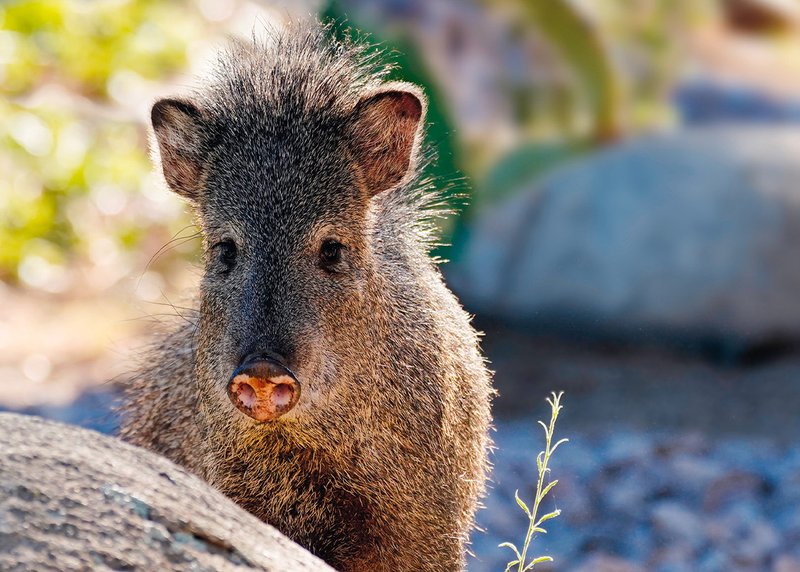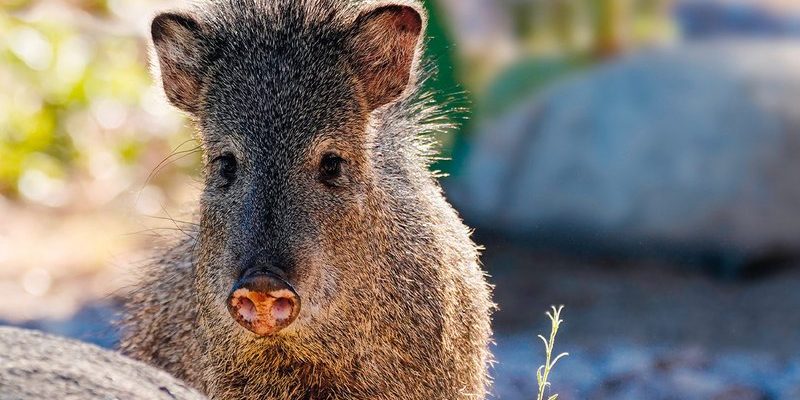
Imagine sitting around a campfire under a starry sky, with tales of the javelina dancing in the air. These stories reflect not only the animal’s role in the ecosystem but also its impact on how people relate to nature and each other. From Indigenous traditions to modern pop culture, the javelina has clawed its way into the hearts of many, leaving behind a trail rich in history and significance. Let’s dive into how this unique critter is portrayed across various cultures and folklore.
1. The Javelina in Native American Folklore
In many Native American cultures, the javelina holds a special place in storytelling. For tribes like the Tohono O’odham and the Yaqui, this creature often symbolizes strength, survival, and community. Stories passed down through generations depict the javelina as a resourceful animal that thrives in harsh conditions.
One story I came across tells of a javelina who, despite being small and seemingly vulnerable, uses its wit to navigate dangerous situations. This tale underscores the importance of intelligence over brute strength, a lesson often celebrated in Indigenous teachings. The javelina teaches us that even in the toughest environments, cleverness can lead to survival.
Moreover, in some traditions, javelinas are seen as messengers in dreams, guiding people toward their true path. They are revered not just for their physical presence but for the lessons they embody about resilience and adaptability. It’s pretty inspiring how one animal can represent such deep cultural values, don’t you think?
2. Javelinas in Southwestern Folklore
In the Southwestern United States, the javelina is often brought into tales that blend humor and life lessons. Local folklore sometimes portrays these animals as mischievous tricksters, akin to foxes or crows in other cultures. Imagine a javelina sneaking into a garden, causing chaos, and then scampering away, leaving behind a trail of laughter and frustration.
These stories often serve as fables, imparting morals about resourcefulness and the consequences of one’s actions. They illustrate the delicate balance between humans and nature, reminding us that while we may try to tame the wild, there’s a playful spirit that can’t be contained. Through these narratives, javelinas embody the unpredictability of life in the desert, teaching us to cherish both the challenges and the joys.
The javelina’s role in this folklore also connects to the region’s wildlife management and conservation efforts. By understanding their significance, we learn to respect these creatures and recognize their vital role in the ecosystem. This relationship is crucial, as it fosters a sense of stewardship among communities.
3. Javelinas in Art and Literature
Jumping into the realm of art and literature, the javelina often serves as a muse for various creators. Artists might depict them in vibrant scenes reflecting the desert’s beauty or use them as symbols of endurance. You might find paintings showing a javelina trotting through a field of wildflowers, replete with colors that capture the essence of the Southwest.
In literature, javelinas sometimes feature in poems and stories, highlighting their unique characteristics—like their sociable nature. Authors often use this creature to symbolize themes of community and connection. For example, a tale might describe a javelina family working together to find food, which could reflect our human experiences of teamwork and love.
Furthermore, local festivals often celebrate the javelina, bringing communities together through art exhibitions, storytelling sessions, and educational talks. These events help preserve the cultural significance of the javelina while allowing people to engage with their heritage in a fun and interactive way.
4. The Javelina in Popular Culture
You might be surprised to know that the javelina has found its way into popular culture as well. From animated films to comedic sketches, this quirky animal garners attention for its endearing antics. Sometimes depicted as the underdog, javelinas are portrayed in ways that resonate with audiences of all ages.
For example, in cartoons, javelinas are often shown as bumbling but lovable characters who get into all sorts of mischief. This light-hearted portrayal allows viewers to connect with the javelina on a personal level, making them more relatable than they might appear at first glance.
Plus, the javelina’s unique features like its tusks and bristly fur make it visually interesting, and that translates well into merchandise ranging from plush toys to apparel. These representations not only entertain but also raise awareness about the real-life javelina, promoting conservation and education about wildlife in the desert.
5. Conservation Efforts and the Javelina
As we explore the javelina’s cultural significance, it’s important to acknowledge the role of conservation in preserving these creatures and their habitats. Environmental organizations work tirelessly to ensure javelinas continue to thrive in the wild. This means that, through stories and culture, we are reminded of our responsibility to protect them.
Javelinas face challenges such as habitat loss and hunting pressures. However, local communities often rally around these issues, using their cultural ties to advocate for conservation efforts. By understanding the javelina’s place in folklore and stories, we can foster a deeper connection with nature and motivate action to help protect these animals.
Whether it’s through educational programs in schools or community-led initiatives, raising awareness about javelinas and their ecosystems can make a significant difference. The more people know about these intriguing animals, the more likely they are to participate in conservation efforts.
6. Javelina Festivals and Community Celebrations
Many regions celebrate the javelina through festivals and events, cherishing its cultural role. These festivals often include fun activities like javelina calling contests, cook-offs, and educational exhibits. It’s a lively atmosphere where community members gather to share stories, traditions, and love for the desert wildlife.
Imagine a bustling fairground, filled with laughter and the delicious aroma of local foods, as people come together to celebrate the javelina. Children might learn about the animal while participating in crafts or games focused on wildlife conservation. These festivals serve not just to entertain but also to educate the public about the importance of javelinas in the ecosystem.
By creating these communal spaces, people are reminded of their heritage and the connection they share with nature. It’s heartwarming to think that a creature like the javelina can bring communities together, fostering appreciation and care for the environment.
7. The Future of the Javelina in Culture
Looking ahead, the javelina will continue to play a role in culture and folklore. As society evolves, so too will the stories and representations of this unique animal. New narratives may emerge, reflecting contemporary issues such as climate change and urban wildlife interactions.
You might wonder how future generations will relate to the javelina. Will they see it as a symbol of resilience, much like those in the past? Or will it represent the challenge of balancing growth and conservation? These are questions that artists, storytellers, and conservationists will explore in the years to come.
The enduring presence of the javelina in folklore serves as a reminder of the delicate balance between nature and humanity, urging us to tell stories that inspire respect and protection for wildlife. The more we embrace this connection, the brighter the future seems for both the javelina and the landscapes it inhabits.
In essence, the javelina is more than just a desert dweller; it’s a cultural emblem infused with stories, traditions, and shared values. As we celebrate its significance, let’s continue to protect and cherish this remarkable creature and the rich tapestry of life it represents.

